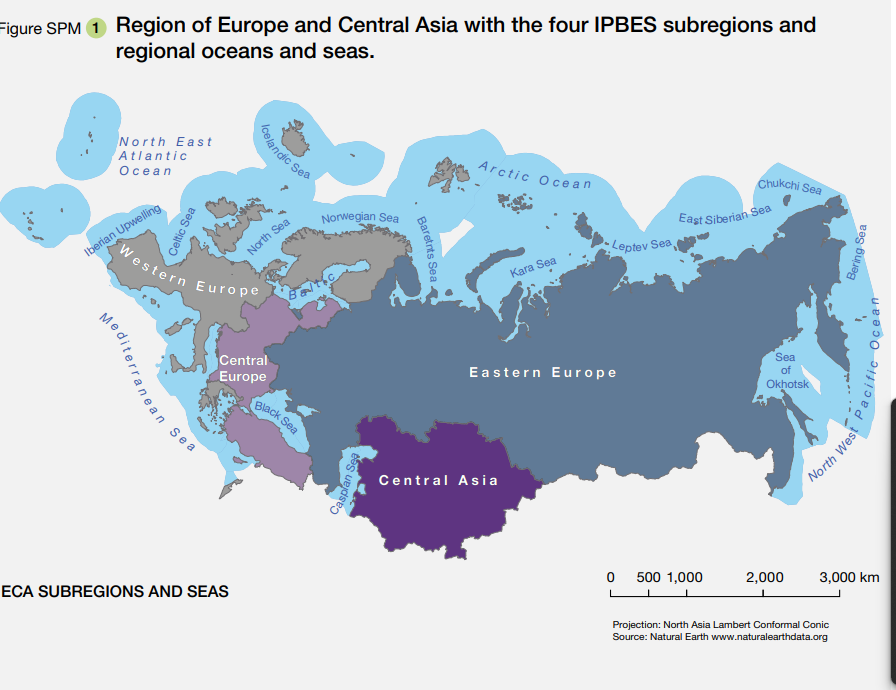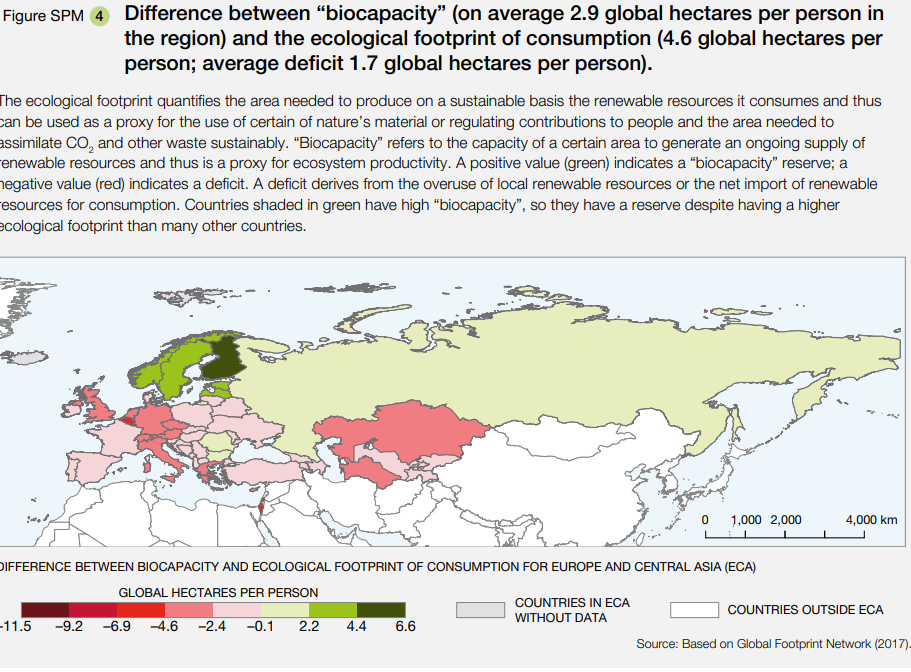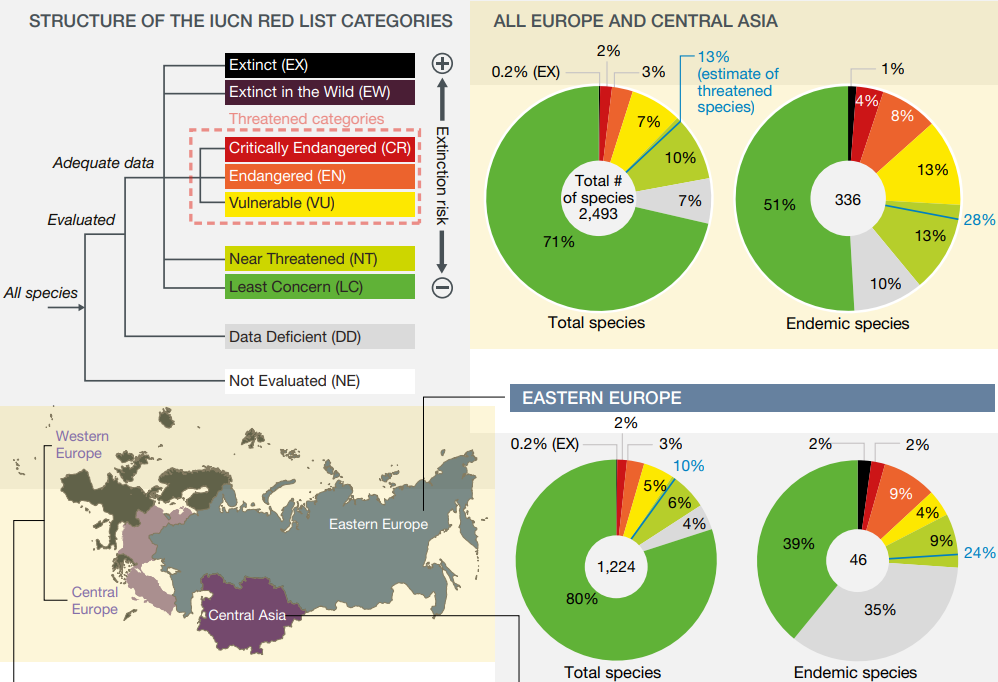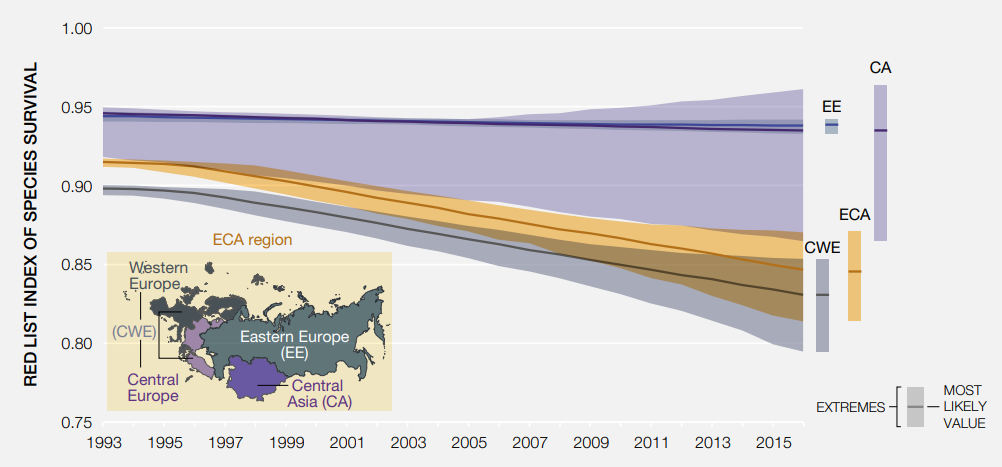Europe

Europe’s ecosystems, as illustrated by the continent’s diverse and intricate landscape, offer a rich tapestry of natural beauty and environmental significance. From the pristine boreal forests of Scandinavia to the sun-drenched Mediterranean coastal areas, Europe boasts a wide spectrum of ecosystems. The continent’s deciduous and coniferous forests provide habitats for an array of wildlife, including brown bears, lynx, and numerous bird species. In the north, the Arctic tundra features an otherworldly, harsh landscape that hosts unique flora and fauna adapted to extreme cold, while the Alpine regions showcase high-altitude ecosystems, with rare alpine plants and wildlife species like the ibex. Europe’s wetlands, rivers, and lakes, from the Danube Delta to the Spanish wetlands, provide essential breeding and stopover sites for migratory birds, as well as critical spawning grounds for fish species. These ecosystems, though often threatened by habitat loss and pollution, are of paramount importance for biodiversity conservation and the well-being of European populations.
The continent’s coastal areas, including the Baltic Sea, the North Sea, and the Mediterranean, exhibit a wide range of marine ecosystems, from kelp forests and seagrass meadows to coral reefs. These coastal zones are vital for fisheries, recreation, and tourism, but they are also under pressure from human activities, such as overfishing and pollution. Additionally, Europe’s agricultural landscapes, with their mosaic of fields, meadows, and hedgerows, are significant for both food production and biodiversity. Conservation efforts in Europe focus on preserving and restoring these diverse ecosystems, with initiatives ranging from rewilding projects in Eastern Europe to marine protected areas in the Mediterranean. Europe’s ecosystems reflect its rich natural heritage and the pressing need for sustainable practices to protect these vital resources for future generations.

OBSERVATIONS FROM THE MAP:
The map of Europe’s forested areas reveals a captivating blend of green expanses stretching across the continent, each with its unique character and ecological significance. In Northern Europe, the boreal forests dominate, covering vast territories in Russia, Scandinavia, and the Baltic states. These coniferous woodlands are home to iconic species like the Eurasian brown bear and the elusive European lynx. The deep green of these boreal forests contrasts sharply with the lighter hues of the temperate deciduous forests that blanket much of Western and Central Europe. These woodlands provide a habitat for a myriad of bird species, such as the European robin and the song thrush, while also contributing to the continent’s timber resources.
Heading south, the map showcases the diverse Mediterranean forests, including the evergreen maquis and sclerophyllous woodlands found in the Iberian Peninsula, Italy, and the Balkans. These ecosystems support unique flora and fauna, adapted to the region’s hot, dry summers. The lush green oases of the Black Sea and the Caucasus Mountains are prominent features on the map, highlighting the importance of the region’s temperate rainforests and beech forests. Europe’s forested areas, as depicted on the map, illustrate the continent’s rich ecological diversity and the need for sustainable forest management practices to ensure the preservation of these vital ecosystems and the services they provide to both nature and society.


Biodiversity loss impairs ecosystem functioning
and, hence, nature’s contributions to people (well established) {3.2.1, 3.2.2, 3.2.3}. The sustained delivery of these contributions requires the maintenance of different levels of biodiversity, i.e., genetic diversity, species diversity, and the diversity of ecosystems and of landscapes and seascapes (well established) {3.2.4}. At each of these levels, the sustained delivery of multiple contributions generally requires higher diversity than the delivery of single contributions (well
established) {3.2.5
Ecosystem functioning is affected by genetic and
phenotypic biodiversity within species, and by functional,
taxonomic and phylogenetic diversity between species (well
established) {3.2.4}. At the landscape and larger spatial
scales, the increasing similarity of the sets of organisms
found at different places, e.g., owing to the application
of similar and intensive land use over large spatial scales,
reduces nature’s overall contributions to people (established
but incomplete) because different sets of organisms
contribute to different contributions of nature to people
(well established) {3.2.5}. Thus, the supply of multiple
contributions of nature to people requires the maintenance
and promotion of high biodiversity at the landscape level
(established but incomplete) {3.2.5}
Present positive trends, mainly due to improved
fishing practices, the establishment of marine
protected areas and a reduction in eutrophication,
include increases in some fish stocks in the North Sea and in plankton diversity in the Black Sea(well established)
In all, 53 per cent of the benthic shallow habitats in Western
and Central Europe are data deficient. The corresponding
figure is 87 per cent in the Black Sea, 60 per cent in the
North East Atlantic, 59 per cent in the Mediterranean Sea
and 5 per cent in the Baltic Sea (well established) {3.3.4.1–
7}. Of the assessed benthic habitats, 38 per cent are
classified as threatened (critically endangered, endangered
or vulnerable), most of them in the Black Sea (67 per cent)
and Mediterranean Sea (74 per cent), followed by the North
East Atlantic (59 per cent) and the Baltic Sea (8 per cent)
(established but incomplete) {3.3.4.1–7}. In the European
Union, among assessments of the conservation status of
species and habitat types of conservation interest covered
by the European Union Habitats Directive, only 7 per cent
of marine species and 9 per cent of marine habitat types
show a “favourable conservation status”. Moreover 27 per
cent of species and 66 per cent of assessments of habitat
types show an “unfavourable conservation status” and the





